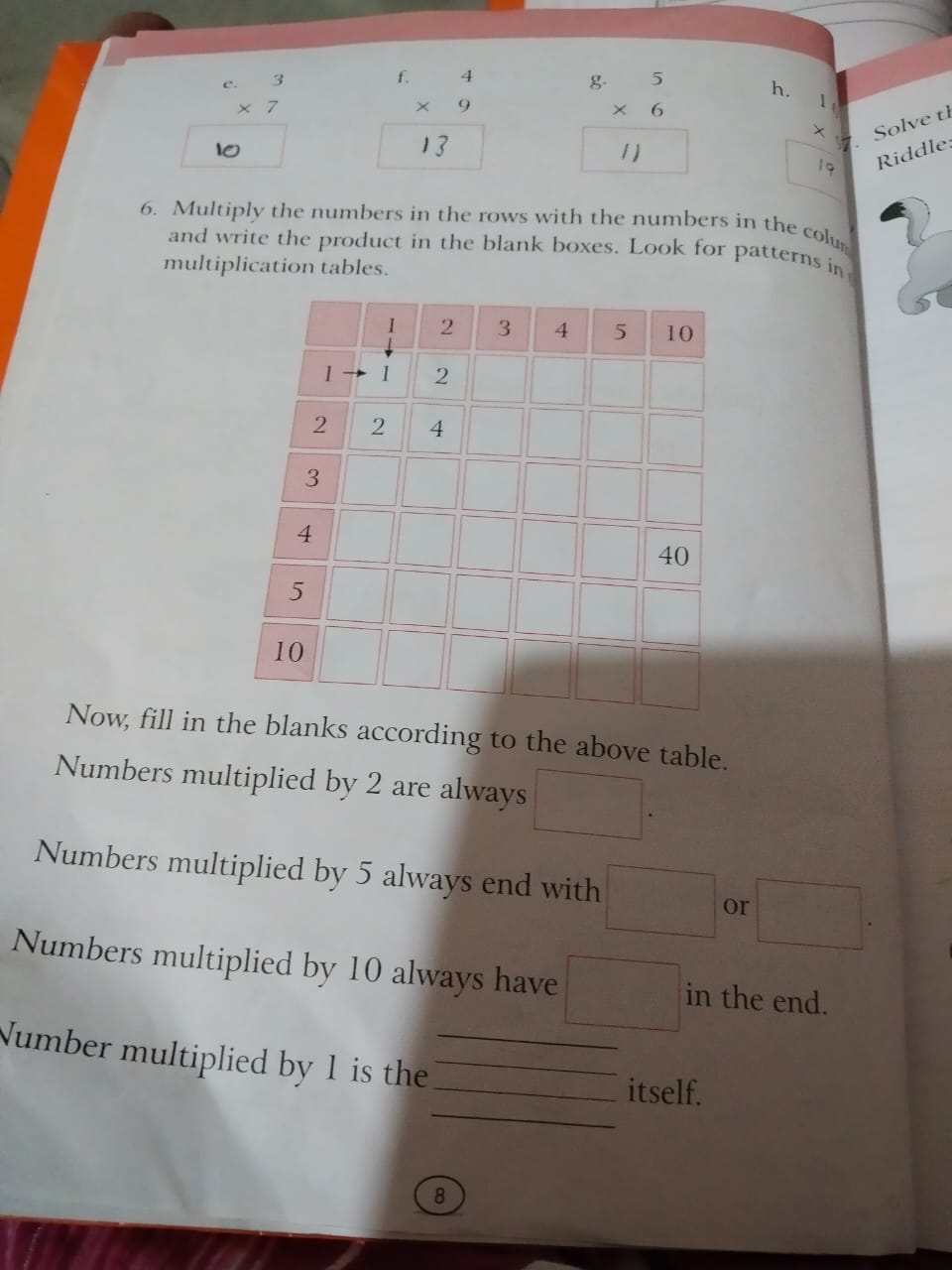Multiply the numbers in the rows with the numbers in the columns and write the product in the blank boxes. Look for patterns in multiplication tables. Now, fill in the blanks accor... Multiply the numbers in the rows with the numbers in the columns and write the product in the blank boxes. Look for patterns in multiplication tables. Now, fill in the blanks according to the above table. Numbers multiplied by 2 are always _____. Numbers multiplied by 5 always end with ____ or _____. Numbers multiplied by 10 always have _____ in the end. Number multiplied by 1 is the _____ itself.

Understand the Problem
The question requires solving multiplication problems and filling in blanks based on specific multiplication patterns. It involves understanding the properties of numbers concerning multiplication by 1, 2, 5, and 10.
Answer
- Even, 0, 5, 0, number itself
Answer for screen readers
- Numbers multiplied by 2 are always even.
- Numbers multiplied by 5 always end with 0 or 5.
- Numbers multiplied by 10 always have 0 in the end.
- Number multiplied by 1 is the number itself.
Steps to Solve
- Fill in the multiplication table with products
Start filling in the products of the numbers in the multiplication table. The numbers on the left are multiplied by the numbers on the top.
-
For example, the first row:
- $1 \times 1 = 1$
- $1 \times 2 = 2$
- $1 \times 3 = 3$
- ... up to $1 \times 10 = 10$
-
Second row:
- $2 \times 1 = 2$
- $2 \times 2 = 4$
- $2 \times 3 = 6$
- ... up to $2 \times 10 = 20$
-
Continue this way for each number in the rows until the entire table is filled.
- Identify patterns for multiplication by 2, 5, 10, and 1
- Numbers multiplied by 2: The products will always be even numbers, as multiplying by 2 doubles the number.
- Numbers multiplied by 5: The resulting products will always end in 0 or 5.
- Numbers multiplied by 10: The products will always end with 0, as multiplying by 10 adds a zero to the end of the number.
- Number multiplied by 1: The result is always the number itself.
- Fill in the blanks
Using the identified patterns, fill in the sentences:
- Numbers multiplied by 2 are always even.
- Numbers multiplied by 5 always end with 0 or 5.
- Numbers multiplied by 10 always have 0 in the end.
- Number multiplied by 1 is the number itself.
- Numbers multiplied by 2 are always even.
- Numbers multiplied by 5 always end with 0 or 5.
- Numbers multiplied by 10 always have 0 in the end.
- Number multiplied by 1 is the number itself.
More Information
This exercise helps reinforce the understanding of multiplication patterns, particularly with the numbers 1, 2, 5, and 10. These patterns are fundamental in learning basic arithmetic and can simplify computations.
Tips
- Confusing even and odd numbers when identifying numbers multiplied by 2. To avoid this, remember that even numbers are multiples of 2.
- Forgetting that numbers multiplied by 5 can end in 0 or 5. Review the multiples of 5 to familiarize yourself with their endings.
- Misunderstanding that multiplication by 10 always adds a zero, not changing the other digits.
AI-generated content may contain errors. Please verify critical information